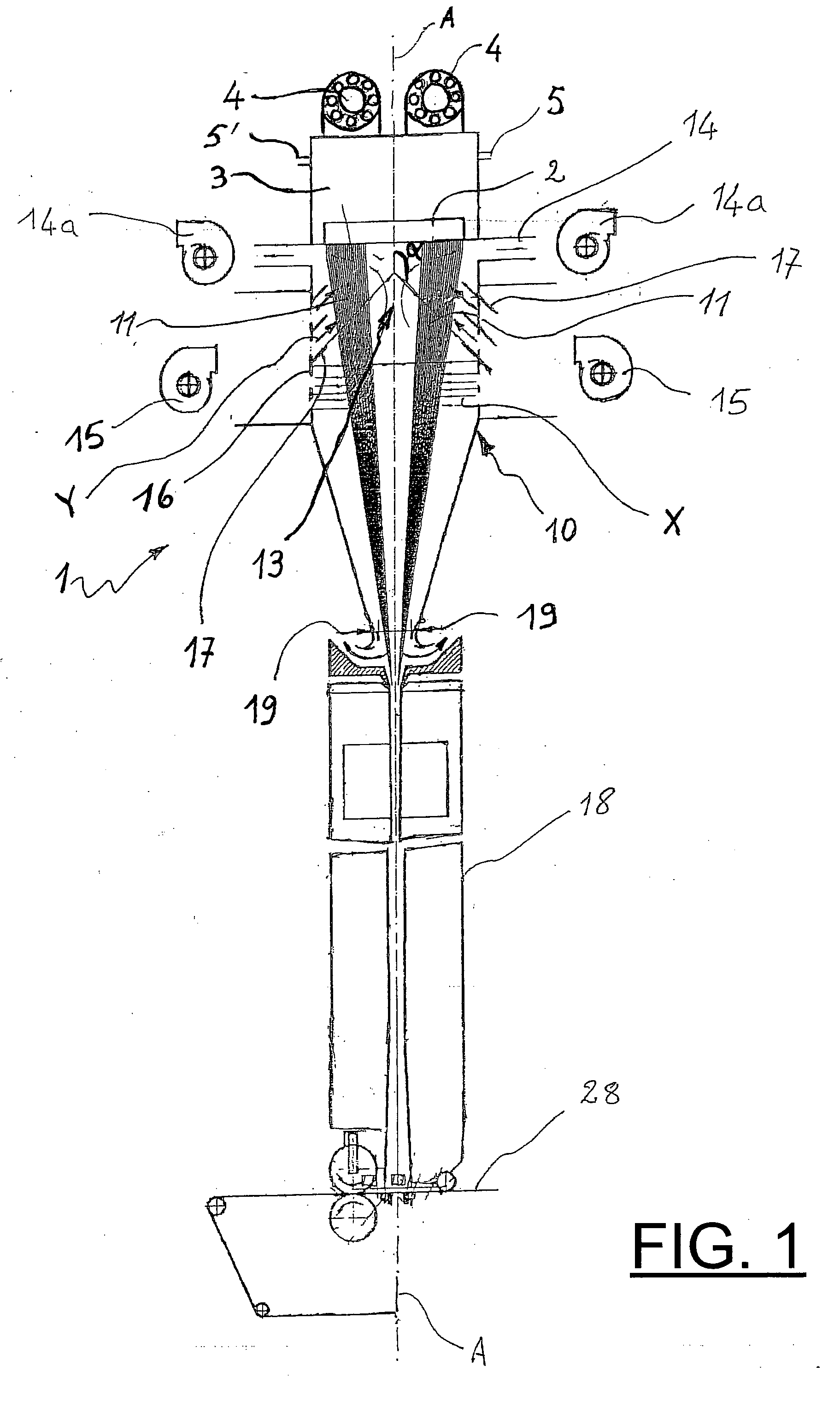Process and apparatus for the production of nonwoven fabrics from extruded filaments
a technology of extruded filaments and processing equipment, which is applied in the direction of weaving, other domestic objects, transportation and packaging, etc., can solve the problems of affecting the cooling air flow, affecting the cooling efficiency of filaments, and obvious negative effects on filament cooling efficiency, so as to achieve greater stretching of filaments, uniform cooling, and improved cooling
- Summary
- Abstract
- Description
- Claims
- Application Information
AI Technical Summary
Benefits of technology
Problems solved by technology
Method used
Image
Examples
Embodiment Construction
[0037]With reference to FIG. 1, the apparatus 1 for the production of a non-woven fabric of filaments according to the present invention provides for an extrusion head 3, comprising a spinneret 2 to extrude a plurality of filaments, to which one or more extruders (not shown) are connected for the extrusion or co-extrusion of mono, bi or tri-component filaments, as known in the art and as described and claimed for example in the patent applications EP-A-00112329.8 and EP-A-96830305.7, both in the name of Farè.
[0038]The polymer is distributed to the holes of the spinneret 2 by means of satellite gear pumps 4, generally two to eight-way. There is at least one pump for each type of polymer and in the embodiment shown there are two satellite pumps 4, each of which feeds a section of the spinneret 2. In the case of a process in which two different polymers are used, as in the production of co-extruded skin-core fibre, for each portion of spinneret, two pumps 4 will be required to feed the...
PUM
| Property | Measurement | Unit |
|---|---|---|
| Angle | aaaaa | aaaaa |
| Current | aaaaa | aaaaa |
| Current | aaaaa | aaaaa |
Abstract
Description
Claims
Application Information
 Login to View More
Login to View More - R&D
- Intellectual Property
- Life Sciences
- Materials
- Tech Scout
- Unparalleled Data Quality
- Higher Quality Content
- 60% Fewer Hallucinations
Browse by: Latest US Patents, China's latest patents, Technical Efficacy Thesaurus, Application Domain, Technology Topic, Popular Technical Reports.
© 2025 PatSnap. All rights reserved.Legal|Privacy policy|Modern Slavery Act Transparency Statement|Sitemap|About US| Contact US: help@patsnap.com



